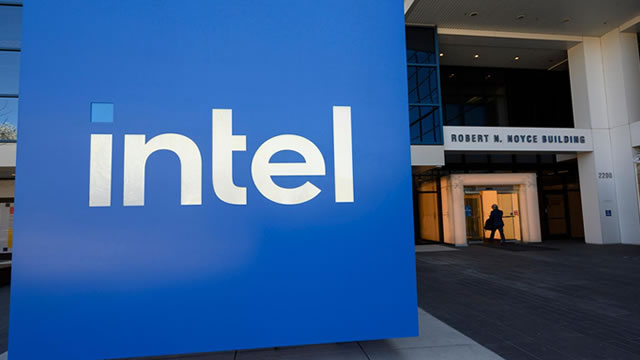Intel’s Tumultuous Journey: A New Era of Challenges
Intel, once a tech titan and a household name, has been grappling with a significant downturn in its business performance. Over the past year, Intel’s stock value has plummeted by an alarming 65%, casting a long shadow over its future prospects. But what’s causing this slide, and what does it mean for Intel’s customers, investors, and the tech industry at large?
The Core of the Issue: Intel’s Flagging CPU Business
The primary catalyst for Intel’s woes is the eroding market share of its core x86 CPU business. For decades, Intel has dominated this sector, supplying processors for the vast majority of personal computers. However, the rise of AMD and its Ryzen CPUs has disrupted this monopoly. AMD’s impressive performance gains and competitive pricing have lured away customers and market share, leaving Intel scrambling to catch up.
Gross Margins: A Gaping Chasm
Another area where Intel is lagging behind its peers is gross margins. Gross margins represent the difference between a company’s revenue and the cost of goods sold. In the tech industry, high gross margins are often a sign of a competitive edge and financial health. Intel’s gross margins, however, have been consistently lower than those of its competitors like AMD, NVIDIA, and TSMC. This disparity can make it difficult for Intel to invest in research and development, manufacturing processes, and other critical areas that could help it regain its footing.
New Leadership, Urgent Decisions
With Intel’s fortunes in flux, its new leadership faces an urgent imperative to steer the company back on track. This may involve a strategic shift in focus, such as a renewed emphasis on advanced technologies like AI, 5G, and the Internet of Things. It could also mean reallocating resources to areas where Intel has a competitive advantage, such as its manufacturing capabilities. Whatever the decisions, they will likely have far-reaching consequences for Intel’s stakeholders.
Impact on Customers: The Trickle-Down Effect
For Intel’s customers, the implications of these challenges could be significant. If Intel continues to struggle, it may lead to fewer innovative products and slower technological advancements. This could, in turn, impact the performance, functionality, and ultimately, the user experience of the devices and systems powered by Intel processors.
Impact on the World: A Shift in the Tech Landscape
Beyond Intel’s customer base, the potential consequences of its downturn are far-reaching. As one of the world’s largest and most influential tech companies, Intel’s struggles could reshape the tech landscape in significant ways. For instance, it could accelerate the consolidation of market share among its competitors, creating a more concentrated industry. It could also lead to increased competition and innovation, as companies seek to capitalize on Intel’s vulnerabilities.
Conclusion: A Turning Point for Intel
In conclusion, Intel’s recent setbacks are a stark reminder of the dynamic nature of the tech industry. The company’s challenges, from eroding market share to flagging gross margins, underscore the urgent need for new leadership and strategic decisions. As Intel navigates this period of transition, the implications for its customers, investors, and the tech industry at large are far-reaching and uncertain. Only time will tell how Intel’s story unfolds and what the future holds for this tech titan.
- Intel’s stock value has dropped by 65% since 2021
- The company’s core x86 CPU business is losing market share to AMD
- Intel’s gross margins are significantly lower than its competitors
- New leadership faces urgent decisions to regain competitive edge
- Impact on customers: potential for fewer innovative products and slower technological advancements
- Impact on the world: potential reshaping of the tech landscape





